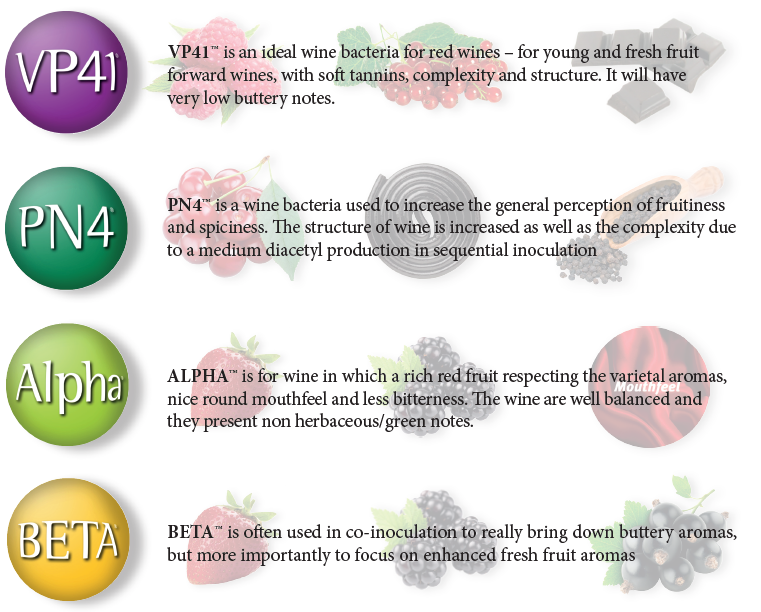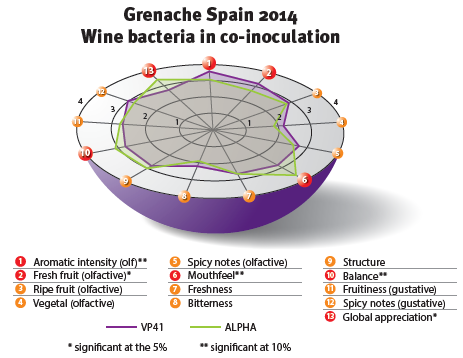
Wine bacteria and the Art of Mastering sensory potential
Publiée le 31/10/2017 16:51Today, it is in the interest of the winemakers to carefully consider MLF as an important step in the definition of their wines. Certain wine bacteria are key to drive the sensory profile of the wines.
Distinct flavor contributors
Malolactic bacteria possess the ability to affect wines in a positive way, both texturally and sensorially. Of the many fermentation-derived volatile compounds that contribute to wine aroma and flavor, the ester profile is of major importance for fruity sensory properties and overall quality of wine. In particular, certain ethyl and acetate esters have been shown to be key contributors to the berry fruit characteristics of red wine and modulate wine ester profiles and fruity sensory properties. Ester hydrolysis and synthesis can be catalysed by esterases and many wine bacteria have been shown to produce esterases with high activity towards water-soluble short-chain esters (Sumby et al., 2012). Many volatile compounds in wine can be released from their flavorless glycoconjugate precursors by enzymatic hydrolysis. For instance, grapes contain aroma precursor compounds, the most active of which are glycosides, mainly linalool, nerol, and geraniol. These aroma compounds play also a role in red wine aroma. And glucosidase activity can also lead to the liberation of cis-oak-lactone the vanilla oak flavor and MLF in barrels will have a more important liberation of oak flavors.
Other compounds such as phenolic compounds (astringency, bitterness) and nor-isoprenoids (aroma enhancers) will also be influenced by the activity of glycosidases. Higher aldehydes can contribute to green, herbaceous and vegetative aromas. Wine bacteria are able to to degrade some of these aldehydes and may contribute to the reduction of green and vegetative aromas depending on the selected wine bacteria used. Finally, diacetyl, although more a concern in white wines, will play a role in red wines as an element of complexity. This compounds has been confirmed as being depended on the wine bacteria used, but also the timing of inoculation.
Style tailoring
First and foremost, they are essential for acidity and stability management of the wines, but also as an essential tool in SO2 reduction strategies. Wine bacteria can reduce the acetaldehyde concentration during MLF.
This reduction is interesting because less SO2 needs to be to the wine, as acetaldehyde is a major SO2 -binding compound.
Second, wine bacteria are essential to finetune the sensory stylel of red wines through a varied metabolism dependent on which selected wine bacteria is used for the MLF through their esterase and glycosidase enzymes activities, as well as the citric
acid metabolism.
Depending on the varietal going through MLF and the conditions (pH, alcohol level, SO2, etc), choosing the wine bacteria will help define all the potential of the grapes during the process. The sensory impact described below of our selected wine bacteria is expressed whatever the timing of inoculation (co-inoculation or post alcoholic inoculation).

The sensory evaluation highlights how the wines are shaped during MLF with the different wine bacteria. The following figure, issued from a tasting with 70 wine specialists worldwide, illustrate how in Grenache wines from Spain, the wine bacteria Alpha™ brought forward a good mouthfeel and balance, whereas the wines with VP41™ shows greater fruit intensity.



